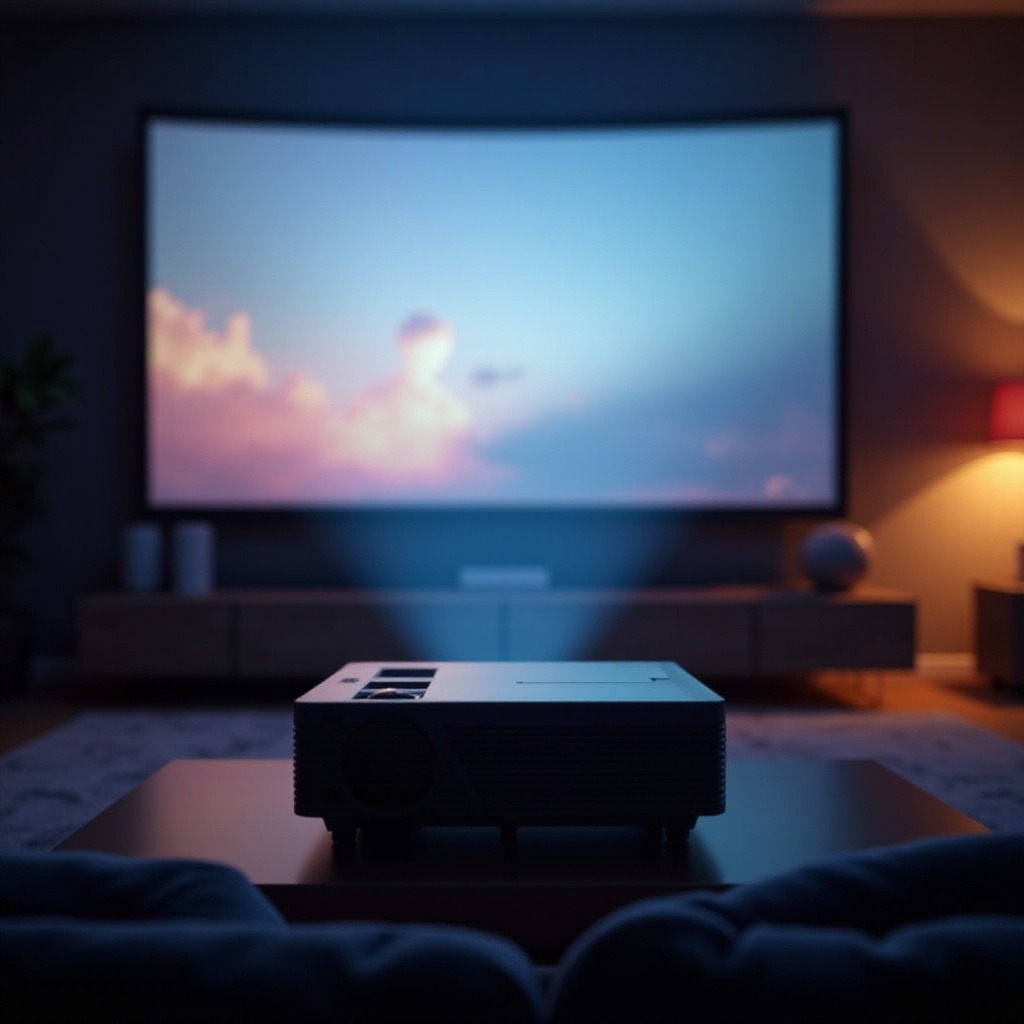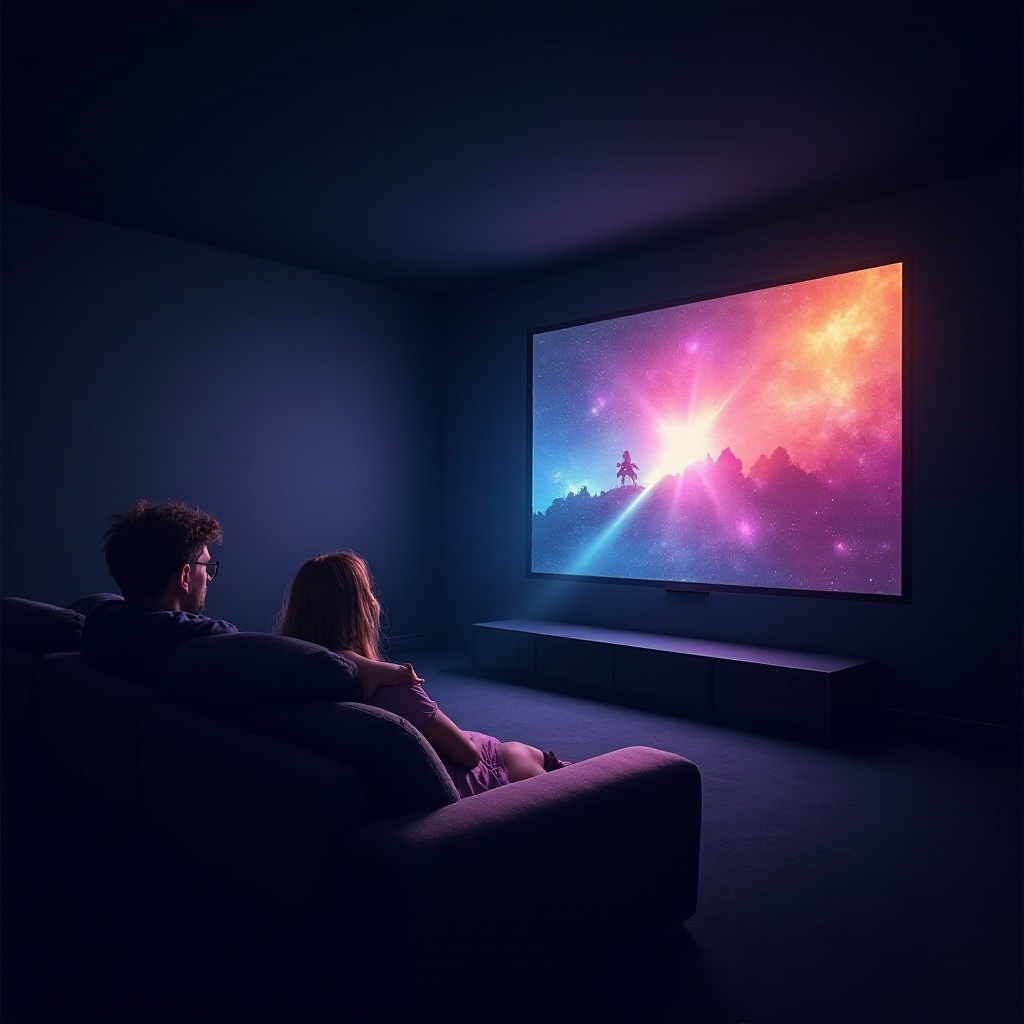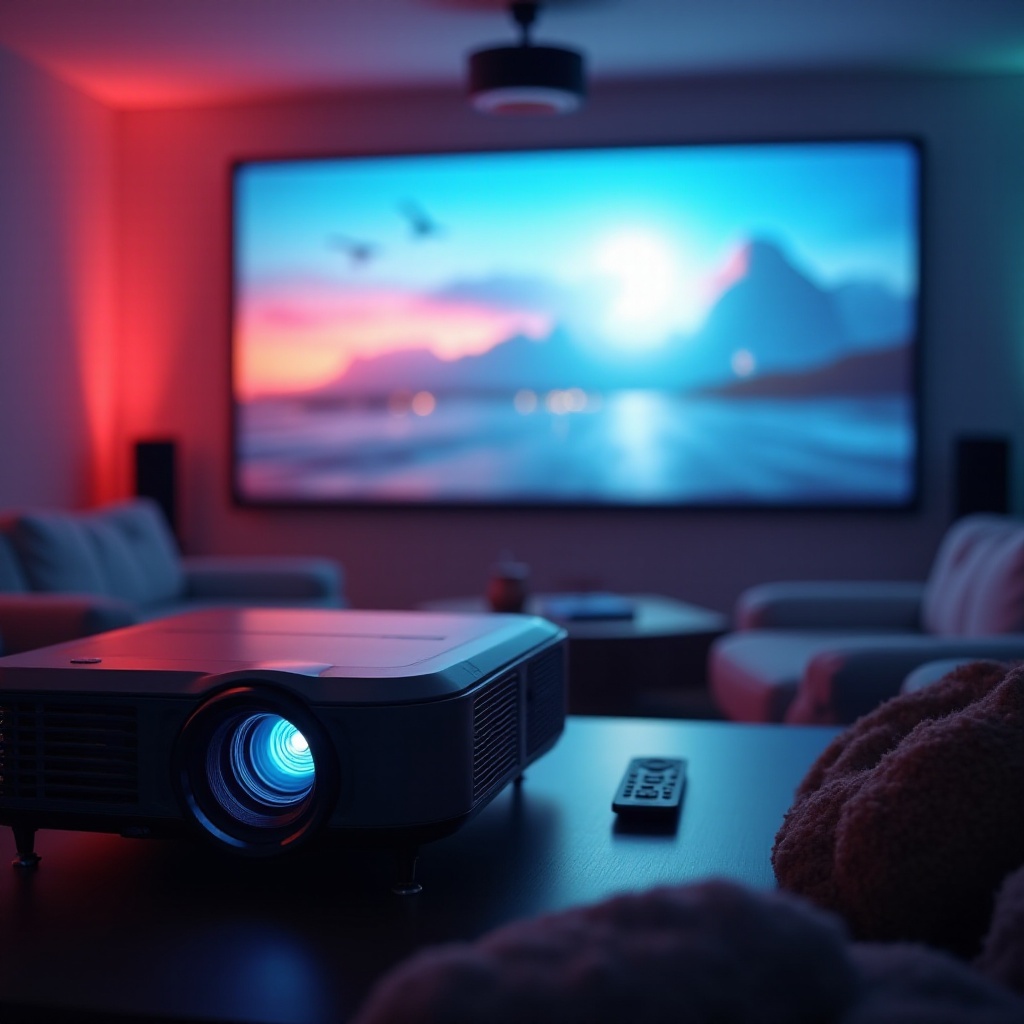Introduction
Choosing the best settings for your projector can make a world of difference in image quality. Whether you’re streaming the latest blockbuster movie, sharing an important presentation, or diving into an immersive gaming experience, understanding how to adjust brightness, contrast, and sharpness is key. This guide will explore the optimal settings to ensure your projector delivers stunning visuals every time.

Understanding Brightness for Projectors
Brightness is one of the foundational settings that directly affect the image quality on your projector. Measured in lumens, brightness determines how vivid and clear the image will appear, especially in various lighting conditions.
Projectors with higher lumen ratings can produce brighter images. This is particularly beneficial in ambient light settings where you cannot control external light sources. However, higher brightness doesn’t always mean better image quality. Too much brightness can oversaturate your images, causing details to be lost.
Adjust the brightness setting to a level that suits your viewing environment. Reduce it slightly in darker rooms to avoid eye strain and enhance details in darker scenes. Balance is key, as too low a setting can render the image dull and washed out.
Mastering Contrast to Enhance Image Quality
Contrast settings on a projector ensure that the degrees of difference between the darkest blacks and the brightest whites are optimal. High contrast ratios result in images with more depth and detail, making your viewing experience more immersive.
When adjusting contrast, be cautious of going too high, which can result in loss of details in bright scenes (known as clipping). Similarly, too low of a contrast setting can make the image appear flat and lifeless.
Calibrate your projector to the highest contrast setting that maintains detailed highlights and preserves shadow details. Watching movies with high contrast scenes or presentations with text on different backgrounds can help you find the sweet spot where visuals are clear, and text remains legible.

Adjusting Sharpness for Clearer Images
Sharpness settings can be tricky. This control is meant to enhance the clarity and detail of the images projected. However, too high a sharpness level can add unnecessary noise and artifacts, making the image look artificial.
To achieve the best sharpness:
1. Start with a mid-level setting.
2. Gradually increase sharpness until you notice the outlines of images and text getting clearer without adding noise.
3. If halos or ghosting appears around objects, slightly reduce the sharpness until these artifacts disappear.
4. For high-definition content, less enhancement is generally needed, whereas, for lower-resolution content, a slight increase can help.
Balanced sharpness ensures that your visuals are crisp and engaging without compromising quality.
General Tips for Optimal Projector Settings
To consistently achieve the best image quality across various types of content, follow these general tips:
- Experiment with Presets: Most projectors come with preset modes like Movie, Sports, and Game. Experimenting with these can give you a good baseline to start your calibration.
- Environmental Adaptation: Always adjust your settings according to your room’s lighting conditions. Darker rooms benefit from lower brightness, while rooms with more light will need higher brightness.
- Use Reference Material: Use high-quality images or content with known characteristics (contrast, brightness, sharpness) to tweak your settings.
- Reduce Ambient Light: If possible, control room lighting to see significant improvements in image quality.
- Placement and Screen Type: The projector’s distance from the screen and the type of screen can significantly impact the image’s appearance. Adjust and use appropriate screens for the best results.

Recommended Settings for Different Uses
Different activities call for different settings to get the most out of your projector. Here’s a breakdown:
Movies
For movies, you want a cinematic experience:
– Brightness: Medium to high, depending on ambient light.
– Contrast: High to ensure depth in dark scenes.
– Sharpness: Moderate, just enough to maintain clarity without creating noise.
Presentations
When delivering presentations, clarity and readability are vital:
– Brightness: High to ensure visibility in well-lit rooms.
– Contrast: Medium, focus on avoiding washed-out text.
– Sharpness: High, to keep text crisp and legible.
Gaming
For gaming, responsive and clear visuals enhance the experience:
– Brightness: Medium to high, depending on ambient light.
– Contrast: High for rich visuals and a more immersive experience.
– Sharpness: Moderate to high, striking a balance between clarity and avoiding artifacts that could be distracting.
Calibration Tools and Techniques
To hone your projector settings, consider using calibration tools and techniques:
1. Calibration Software: Tools like CalMAN or DisplayCAL can provide precise adjustments and help ensure color accuracy.
2. Reference Images: Use well-known calibration images or discs to help manage brightness, contrast, and sharpness.
3. Professional Calibration: Hiring a professional can ensure your projector is optimized if unsure about doing it yourself.
Regular calibration keeps your projector performing at its best, ensuring you always get top-quality visuals.
Conclusion
Optimizing your projector’s brightness, contrast, and sharpness settings can significantly enhance your viewing experience. By understanding and adjusting these settings according to your room, type of content, and personal preferences, you can enjoy the best possible display quality. Keep refining your settings, and utilize calibration tools to maintain optimal performance.
Frequently Asked Questions
How often should I recalibrate my projector settings?
Recalibrate your projector every few months to maintain peak performance, and immediately after any significant changes in room lighting or projector relocation.
Are there standard settings for all projectors?
While there are no universal settings for all projectors, following guidelines and tailoring settings to your specific environment and content ensures the best results.
Can room lighting affect projector settings?
Yes, ambient light significantly impacts how your projector displays images. Adjust brightness and contrast according to your room’s lighting conditions to maintain image clarity and quality.